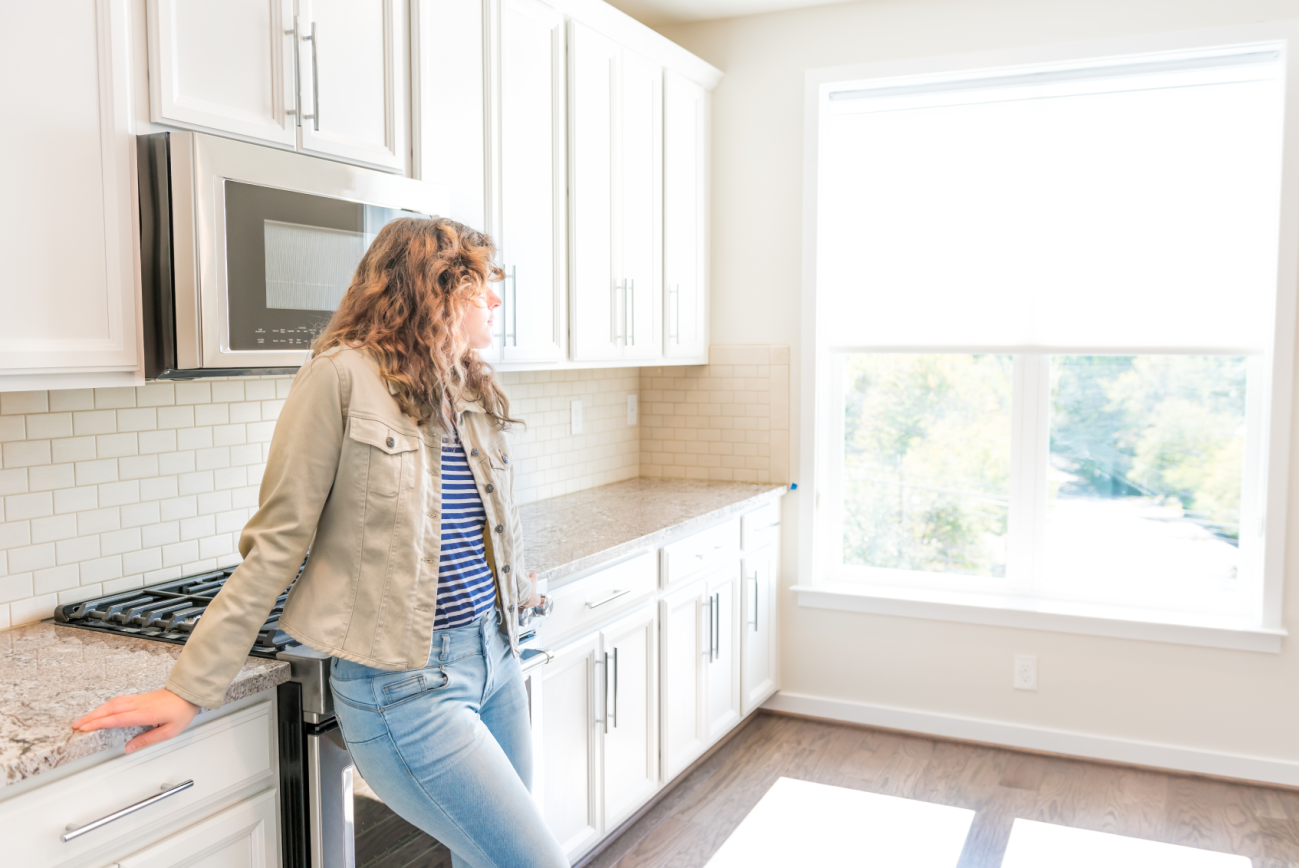If you’re buying your first home, it’s imperative that you have a clear sense of what you’re looking for and what you can afford. Once you find a home that feels like a good fit, it’s important to note details and signs that can give you more information on the property. Learning the signs of a well-maintained home that will retain value lets you enter the real estate market with confidence.
This list of five things to look for when you’re buying your first home, will help you stay focused on the most important aspects of the property you’re looking at — from spotting signs of damage to thinking about context.
How to spot red flags in a potential new home
Even if you’re a first-time homebuyer, you can still trust your instincts. Home viewings are designed to draw your attention to favourable features, with beautiful photos and well-staged living rooms. You’re meant to be inspired, but don’t let that distract you from any potential red flags. Knowing what to look for can help you identify issues like water damage, electrical concerns, and other issues. Don’t forget to trust your gut and ask your real estate agent any questions you have along the way.
The 5 things to look for when buying your first home
1. A strong foundation
As a home ages, the foundation may shift as the soil underneath it falls or rises over time. It’s normal for homes to have some subtle hairline cracks or the occasional charming asymmetry — especially if you’re buying an older home — but larger gaps, cracks, or fractures above and below windows and doors can signify serious issues in the foundation of the home. You should also look out for slanted or sagging floors, basement walls that that bend inward, chimneys or roofing that seems to lean in one direction, or sticking windows and doors that are hard to open or close.
2. Signs of property maintenance, care, or neglect
If this is your first home, it’s advisable to choose a home that’s been properly maintained and requires minimal upkeep. Gather insight about maintenance from little details during a home walkthrough. Are light bulbs burned out? Was caulking or repair work on the walls hastily done? An unruly yard or faded paint aren’t dealbreakers, but they might signify a previous owner who wasn’t great at changing air filters, upgrading systems, cleaning chimneys, or checking for leaks. Improper home maintenance can cause bigger issues for owners, so take note of how the little details could affect future pitfalls.
3. Note the environmental context of your potential new home.
Buying a new home in Canada requires special attention to the surrounding area and environmental context of the home you’re considering. If you’re viewing a home in the summer, think through how it would respond in the winter to freezing, or in the spring when the ice thaws and melts. If you’re looking at a new home in a different province, familiarize yourself with weather patterns in the area, and talk to local homeowners to get a sense of environmental factors that could have an effect.0
Perhaps you’re wanting a few acres of nature to be part of your home purchase. A nearby stream or river might seem like a nice feature, but does it flood in the spring? Beavers can dam up a river in Ontario and cause flooding that you’ll need to address. Dealing with animal concerns can be pricey and time consuming, while falling trees can affect power lines and internet signals. Thinking through possible outcomes will let you enjoy the beauty of the area without any surprises.
4. Look for signs of mold and water damage.
When you’re viewing your potential home, take time to open bathroom and kitchen cabinets to look at drains and note any signs of damage. Look for ceiling patches, black spots, cracks in caulking around pipes and bathtubs, and patches on the ceilings.
Follow your nose! Musty or unusual odours can also signify mold or water damage. It’s worth asking about any unpleasant or musty odours. Don’t assume that a previous owner’s pets or lifestyle are responsible for a smell, as it could signify a bigger problem with the home itself.
5. Look beyond the surface
An accent wall, brand new paint job, or strategically placed couch could be hiding something you’ll want to make note of. You can ask the person showing you the home to move items or open closet doors to see if there are issues with flooring or tiling. As a potential homeowner, you may be tempted to walk through the home like it’s a museum or a friend’s house; but it’s important to ask questions, inspect confidently, and look beyond the veneer to make sure you’re getting the full picture.
Looking for more guidance in buying your first home?
Houseful provides personalized guidance for your real estate journey. If you’re a first-time homebuyer, our dedicated team of experts offers support from initial planning through to moving day. Explore our blog for more useful checklists, tips, and market information. Work with top-rated, local real estate agents and gain access to financial insights and advice from RBC Home Advisors.
Start your home search with Houseful.




